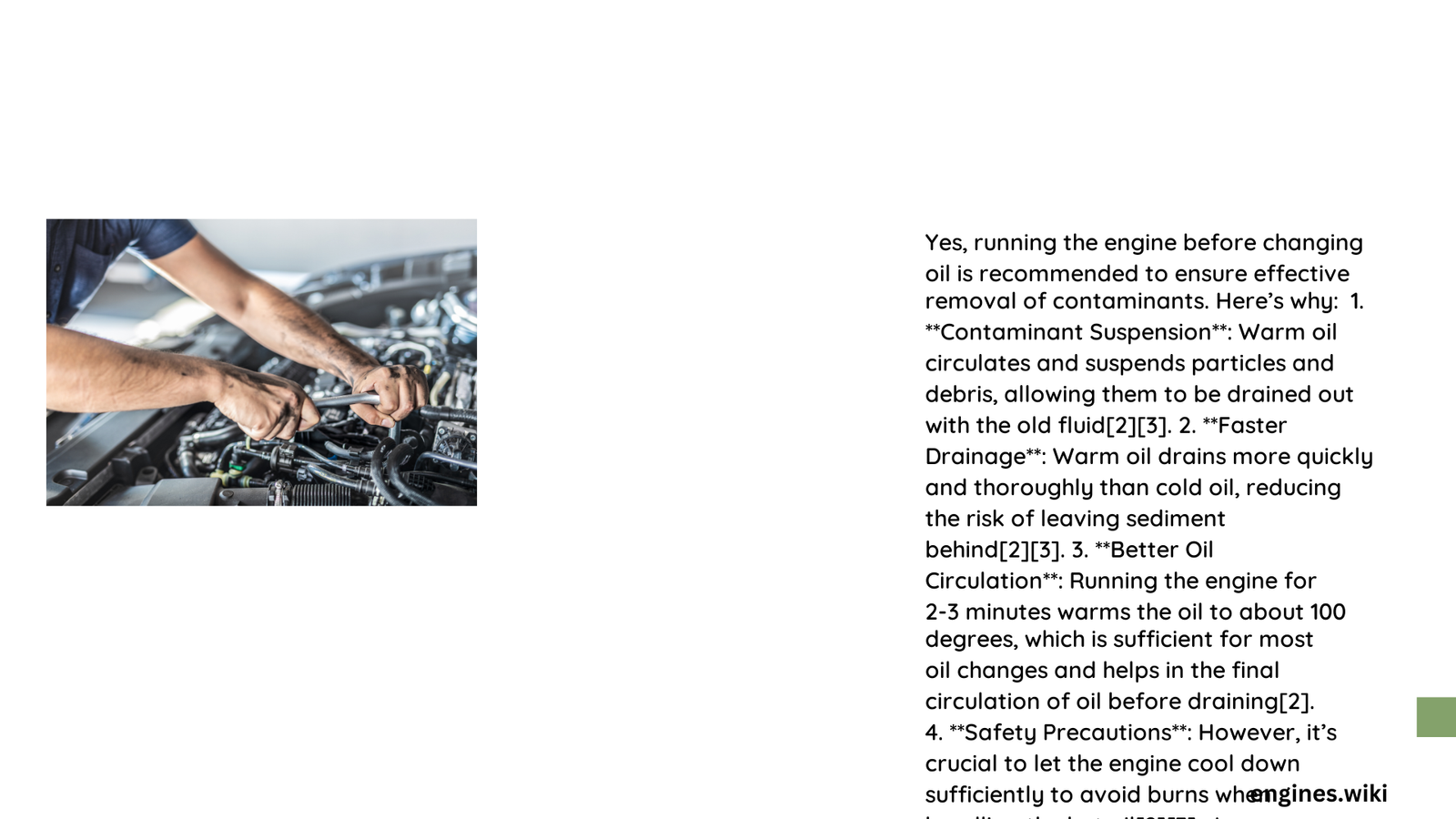Changing engine oil requires strategic preparation to ensure maximum efficiency and minimal contamination. Vehicle owners often wonder about the critical steps before draining old oil, particularly whether running the engine beforehand impacts the oil change process. Understanding the nuanced relationship between engine temperature, oil viscosity, and drainage efficiency can significantly improve maintenance outcomes and protect your vehicle’s long-term performance.
Why Warm the Engine Before Oil Drainage?
What Happens When Engine Oil is Cold?
Cold engine oil presents several challenges during drainage:
- High Viscosity: Cold oil becomes thick and resistant to flow
- Trapped Contaminants: Particles remain suspended in dense oil
- Incomplete Drainage: Reduced fluid movement prevents thorough cleaning
How Does Engine Temperature Affect Oil Change?
| Temperature Range | Oil Behavior | Drainage Efficiency |
|---|---|---|
| Below 90°F | Extremely Thick | Poor (< 50%) |
| 100-150°F | Moderate Fluidity | Good (70-80%) |
| 160-200°F | Optimal Flow | Excellent (85-95%) |
Precise Steps for Optimal Oil Change Preparation

What Duration Should You Run the Engine?
Experts recommend a specific warm-up protocol:
- Start the engine
- Allow idle for 2-3 minutes
- Reach approximately 100-120°F oil temperature
- Turn off engine and prepare for drainage
What Safety Precautions Matter?
Critical safety considerations include:
- Wear heat-resistant gloves
- Use eye protection
- Allow slight cooling before direct contact
- Work on level surface
- Keep fire extinguisher nearby
Technical Insights into Oil Drainage Mechanics
Why Does Warm Oil Drain More Effectively?
Warm oil demonstrates superior drainage characteristics:
- Reduced molecular cohesion
- Lower surface tension
- Enhanced particle suspension
- Faster flow rate through drain systems
What Tools Enhance Oil Change Process?
Recommended equipment:
- Digital infrared thermometer
- High-quality drain pan
- Torque wrench
- Oil filter removal tool
- Funnel with wide mouth
Professional Recommendations
When Should You Avoid Warming the Engine?
Potential scenarios requiring caution:
- Extremely hot ambient temperatures
- Recent extended driving
- Engine already at operating temperature
- Manufacturer-specific instructions differ
Common Misconceptions
Are There Risks in Warming Engine?
Potential risks include:
- Potential oil oxidation
- Minor fuel consumption
- Unnecessary wear on components
- Environmental considerations
Advanced Maintenance Strategies
How Can You Optimize Oil Change?
Strategic approaches:
- Use manufacturer-recommended oil viscosity
- Monitor engine temperature precisely
- Maintain consistent maintenance schedule
- Document each oil change procedure
Final Technical Considerations
What Professional Mechanics Suggest?
Top automotive technicians consistently recommend:
- Warm engine for 2-3 minutes
- Ensure moderate temperature range
- Prioritize complete contamination removal
- Follow vehicle-specific guidelines
Pro Tip: Always consult your specific vehicle’s manual for manufacturer-recommended procedures.
Conclusion
Understanding the nuanced process of engine oil change requires technical knowledge and precise execution. By comprehending temperature dynamics, drainage mechanics, and safety protocols, vehicle owners can significantly enhance maintenance effectiveness.
